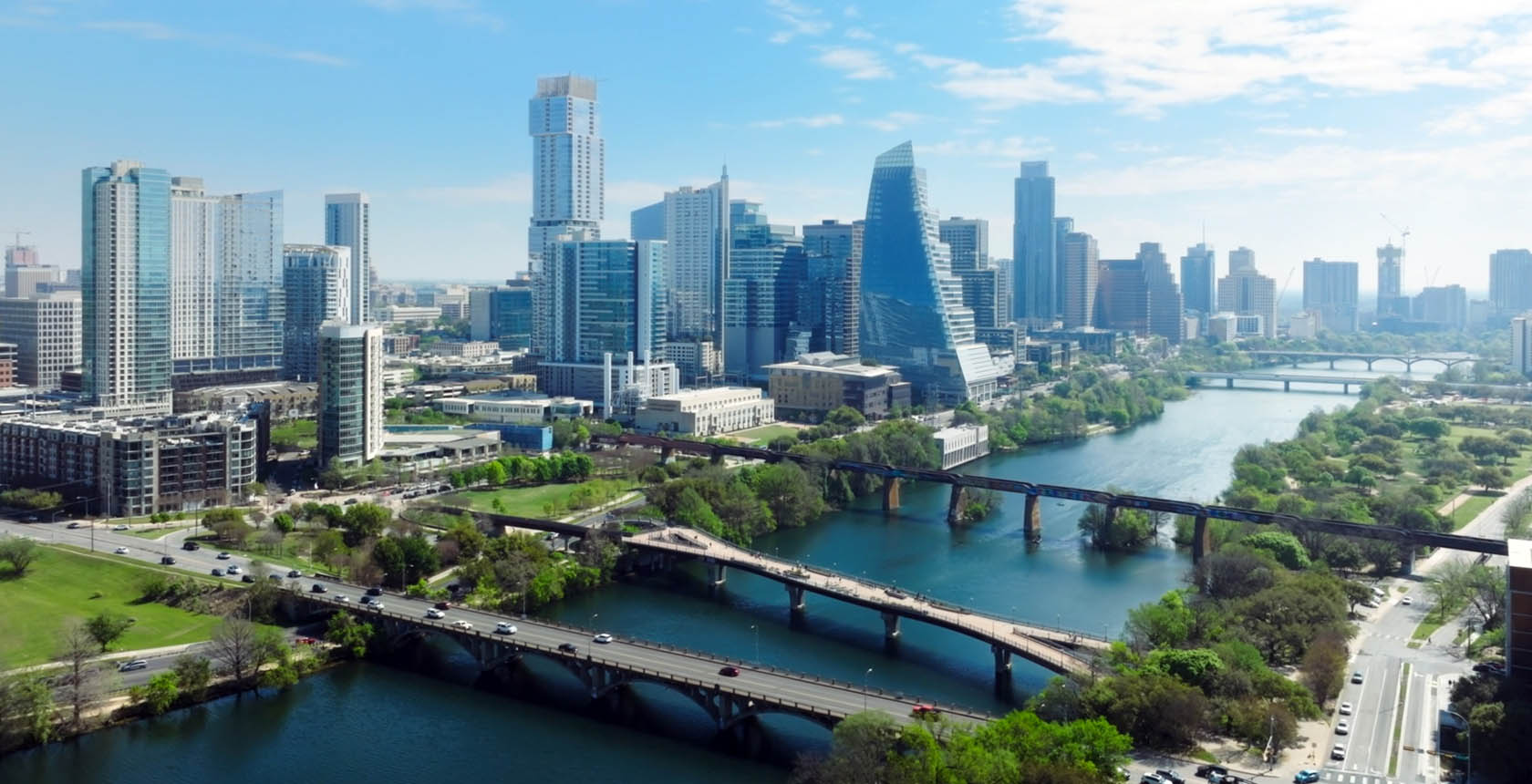Cities around the world, from bustling urban centers to quiet neighborhoods, are stepping up their fight against pollution by creating Low Emission Zones (LEZs) that lead the charge for cleaner, healthier air. And it’s not just happening anywhere—many global metropolises have taken significant steps in this direction. However, recent developments in the United States have shown that such initiatives can face political and regulatory challenges.
Enter ANPR and MMR technologies—game-changing tools that simplify enforcement and help improve traffic flow. In this article, we’ll dive into how these technologies, backed by cutting-edge camera components and lightning-fast servers, are reshaping cities and promoting sustainability. Let’s explore how cities worldwide are leveraging technology to create cleaner, smarter spaces.
What Are Low Emission Zones (LEZs)?
Picture a cleaner, quieter city with fresher air and fewer traffic jams — that’s the dream behind Low Emission Zones (LEZs). These designated areas restrict or charge high-polluting vehicles to encourage greener travel choices. By limiting access for older, more polluting cars and trucks, LEZs reduce harmful emissions, making cities healthier for everyone.
The Complexities of Implementing Low Emission Zones
New York City had planned to launch the nation’s first congestion pricing program in Manhattan below 60th Street on January 5, 2025. This initiative aimed to reduce traffic congestion, enhance air quality, and generate revenue for public transit improvements. However, on February 19, 2025, the federal government withdrew its approval for the program, effectively halting its implementation. This decision underscores the complexities and political considerations surrounding such policies, even in cities known for their environmental ambitions.
While New York’s congestion pricing plan has been blocked for now, many other cities worldwide continue to implement similar initiatives successfully. By integrating ANPR and MMR technologies, these cities are ensuring the effectiveness of their LEZs, reducing emissions, and creating healthier urban environments. Despite occasional setbacks, the broader movement toward sustainable and livable cities remains strong.
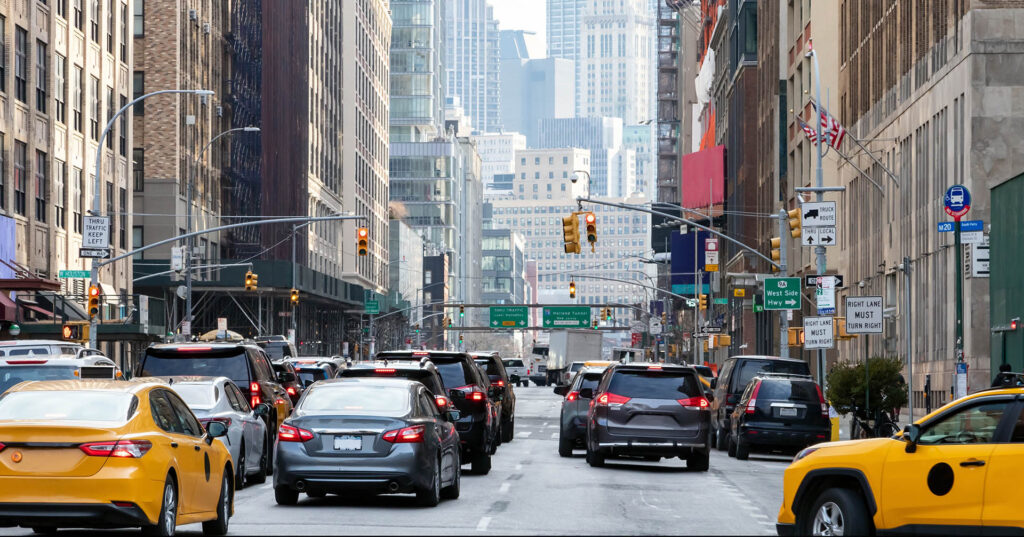
The Ongoing Impact of Low Emission Zones
Across the globe, LEZs are becoming a key strategy for urban sustainability. London’s Ultra Low Emission Zone (ULEZ) has already slashed nitrogen dioxide levels by nearly 50% in some areas. Meanwhile, cities like Paris, Berlin, and Milan have introduced similar initiatives, encouraging residents to embrace electric vehicles or public transport.
LEZs are more than just environmental efforts; they’re paving the way for greener, smarter, and more livable cities worldwide. With cutting-edge technologies like ANPR and MMR cameras, enforcing these zones has never been easier — or more impactful.
How to Build a Low Emission Zone
Creating a Low Emission Zone is all about setting clear goals: Do you want to reduce vehicle emissions, encourage electric vehicle (EV) adoption, or achieve both? Once you know your objectives, it’s time to choose the right tools. ANPR (Automatic Number Plate Recognition) cameras are at the core of any LEZ, giving authorities the ability to track and monitor vehicles entering restricted zones. But why stop there?
MMR (Make and Model Recognition) takes these systems a step further by distinguishing between vehicles of the same type—like identifying whether a car is electric or fuel-based. And to ensure everything runs smoothly, integrating a server, like the Globessey Data Server (GDS) is key. GDS acts as a powerful middleware solution, seamlessly connecting your cameras and managing traffic data. GDS, built on the powerful ELK stack, is designed to handle massive volumes of data with lightning-fast processing. This ensures that Low Emission Zones (LEZs) not only operate efficiently but also maintain the high level of accuracy needed for smooth enforcement and traffic management. The server’s role in this process is critical, as it can often mean the difference between an LEZ that runs flawlessly and one that faces frequent challenges. We’ll take a closer look at this essential component later in the article.
What Are Your Options for Enforcing Low Emission Zones?
Creating a cleaner and greener city with a Low Emission Zone (LEZ) is a powerful step toward sustainability. But what does it take to ensure that an LEZ operates effectively? This is where technology comes into play, offering smart and efficient solutions to enforce regulations and maintain smooth operations.
1. Static ANPR Cameras at Zone Entry Points
Imagine driving into a restricted zone, and as soon as you enter, your vehicle is instantly identified and cross-referenced with emission databases thanks to the magic of Automatic Number Plate Recognition (ANPR) cameras. In just moments, the system can flag high-polluters, helping to keep the air cleaner for everyone. It can also be used to ensure that only authorized vehicles, such as those belonging to residents, are allowed entry. It’s like having a virtual gatekeeper that ensures only eco-friendly vehicles or authorized ones are allowed without consequences into the zone.
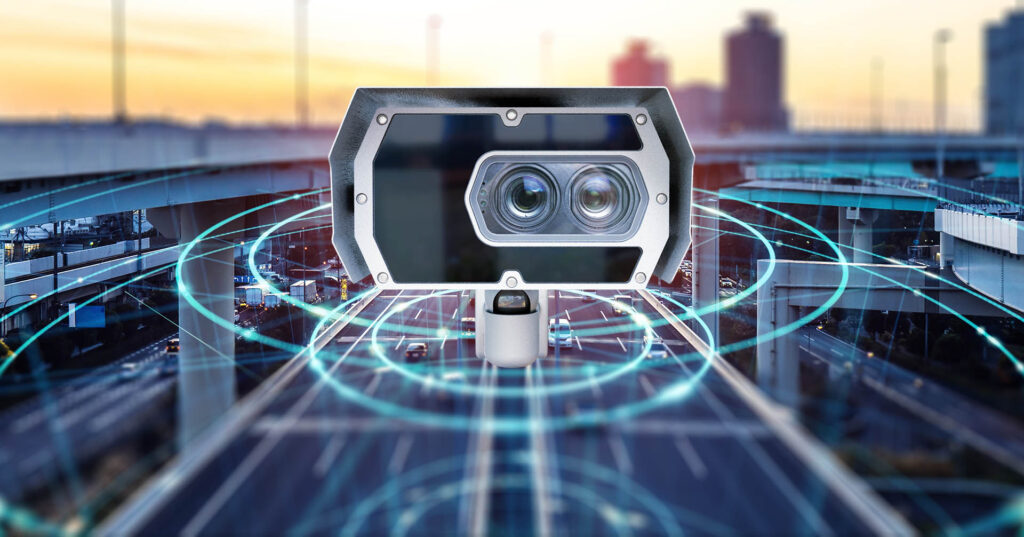
2. Mobile Units with ANPR/MMR Capabilities
Need a flexible way to enforce rules on the move? Mobile units with ANPR and Make and Model Recognition (MMR) technology have got you covered. These patrol vehicles can identify violators in real time, even while moving through the city. The MMR feature adds a layer of precision, and Adaptive Recognition is actively developing a feature that enhances the existing MMR (Make, Model, and Color Recognition) technology, enabling it to distinguish between similar-looking vehicles—such as two SUVs—and identify whether they are electric or fuel-powered. It’s like having Sherlock Holmes in your traffic patrol team!
The Power Behind a Low Emission Zone: Meet GDS
What truly sets a Low Emission Zone (LEZ) apart is a connected network of cameras, all seamlessly managed by the Globessey Data Server (GDS). Acting as the brain of the LEZ enforcement system, GDS links all cameras—whether static or mobile—and processes vast amounts of data at lightning speed. This ensures smooth operations across large zones or even multiple counties.
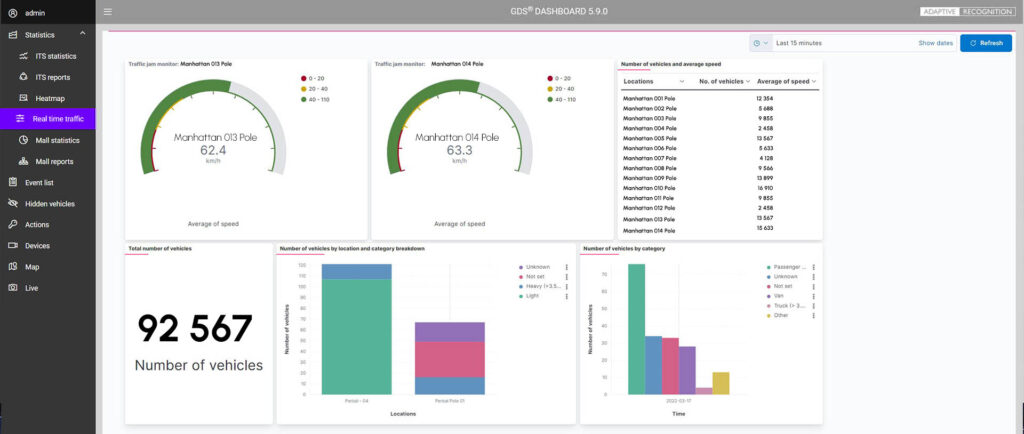
Why GDS is Essential:
- Seamless Data Collection: Every camera streams data to a centralized hub for real-time analysis.
- Real-time Alerts: GDS allows you to set specific criteria (e.g., license plate, speeding, or yellow van) and receive instant notifications via email or SMS when these conditions are met, ensuring immediate action can be taken.
- Effortless Management: Whether managing a handful of cameras or hundreds, GDS simplifies endpoint control and day-to-day operations.
- Real-Time Insights: Beyond enforcing rules, GDS helps identify traffic patterns, monitor trends, and refine strategies.
- Scalable and Secure: Its scalability supports expanding urban initiatives, while robust authentication ensures secure data access.
By combining cutting-edge technology with a powerful backend, GDS transforms LEZ enforcement from a logistical challenge into an efficient, impactful solution. A centralized system like GDS offers far more than just processing power. It simplifies the management of cameras and other connected devices, making day-to-day operations effortless. Robust authentication ensures secure data access, while its versatility means it can integrate seamlessly with third-party devices and Adaptive Recognition solutions. In other words, GDS isn’t just a backend system — it’s the backbone of a smarter, greener city.
The result? Cleaner air, smoother traffic, and happier residents — a win-win for everyone.
The Benefits of LEZs in Numbers: Key Insights from Traffic Data
The value of traffic data lies in its ability to go beyond enforcement—it drives real change. Let’s dive into why these specific insights are game-changers for cities adopting Low Emission Zones (LEZs):
1. Measuring Emission Reductions: Proof of Progress
Imagine this: a year after a Low Emission Zone (LEZ) is implemented, there’s a measurable drop in harmful emissions. This isn’t just an impressive statistic—it’s solid proof that such initiatives can make a real difference. Tracking reductions over time highlights the impact of cleaner air measures, builds public trust, and provides valuable data to support further environmental efforts or secure funding for new projects.
2. Traffic Flow Optimization: Keeping the City Moving
LEZs aren’t just about limiting pollution—they’re also about smarter traffic management. Analyzing traffic patterns helps cities identify bottlenecks, adjust road usage policies, and even time traffic lights better. The result? Fewer idling cars, reduced fuel consumption, and happier commuters. A well-optimized LEZ doesn’t feel like an inconvenience; it becomes a seamless part of daily life, enhancing urban mobility while reducing congestion.
3. Dynamic Pricing Systems Based on Real-Time Traffic Data
Why stop at a flat fee for entering the zone when you can get smarter? Dynamic pricing adjusts toll rates based on traffic volume, time of day, or pollution levels. During rush hour, fees could increase to discourage non-essential trips, while off-peak times might see reduced rates. This approach not only helps manage congestion but also incentivizes cleaner travel habits.
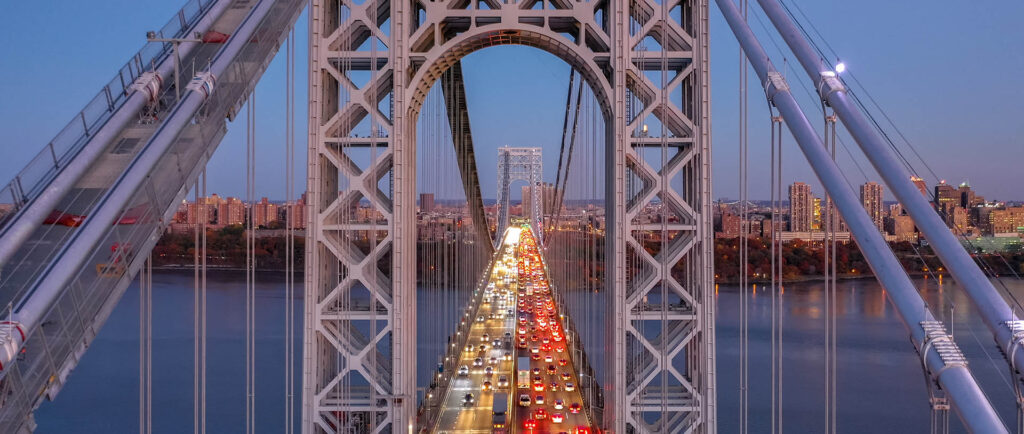
4. Compliance Tracking: Enforcing Fairness
Rules only work when they’re followed, and that’s where compliance tracking comes in. By identifying repeat offenders, cities can ensure fairness—those who abide by the rules aren’t overshadowed by those who don’t. It also creates a feedback loop: as violators are held accountable, compliance rates improve, and the system becomes more effective. This not only maintains the integrity of the LEZ but also boosts public confidence in the initiative.
Together, these insights offer more than just operational benefits—they build a foundation for a cleaner, smarter, and more sustainable city. When traffic data is used to measure impact, optimize flow, and enforce rules, the benefits ripple through the entire community, creating a future that everyone can enjoy.
Empowering Cities with Technology: The Future of Low Emission Zones
Low Emission Zones represent a bold step toward a greener future, and with the right technology, they are easier to implement and manage than ever before. ANPR and MMR technologies, paired with advanced servers like the Globessey Data Server (GDS), provide cities with the tools to enforce regulations seamlessly, gather actionable insights, and optimize traffic flow in real time. These technologies ensure that every vehicle entering a zone is accurately assessed, every violator is identified, and every decision is backed by reliable data.
But beyond the tech lies a deeper purpose: creating cleaner, healthier cities for future generations. LEZs don’t just reduce emissions—they pave the way for communities where clean air is the norm, not a luxury. They inspire confidence that urban areas can thrive without sacrificing the environment.
By embracing these solutions, cities around the world are proving that sustainability isn’t just a goal; it’s a movement powered by innovation. With every LEZ that comes to life, we take another step toward a brighter, greener tomorrow.

